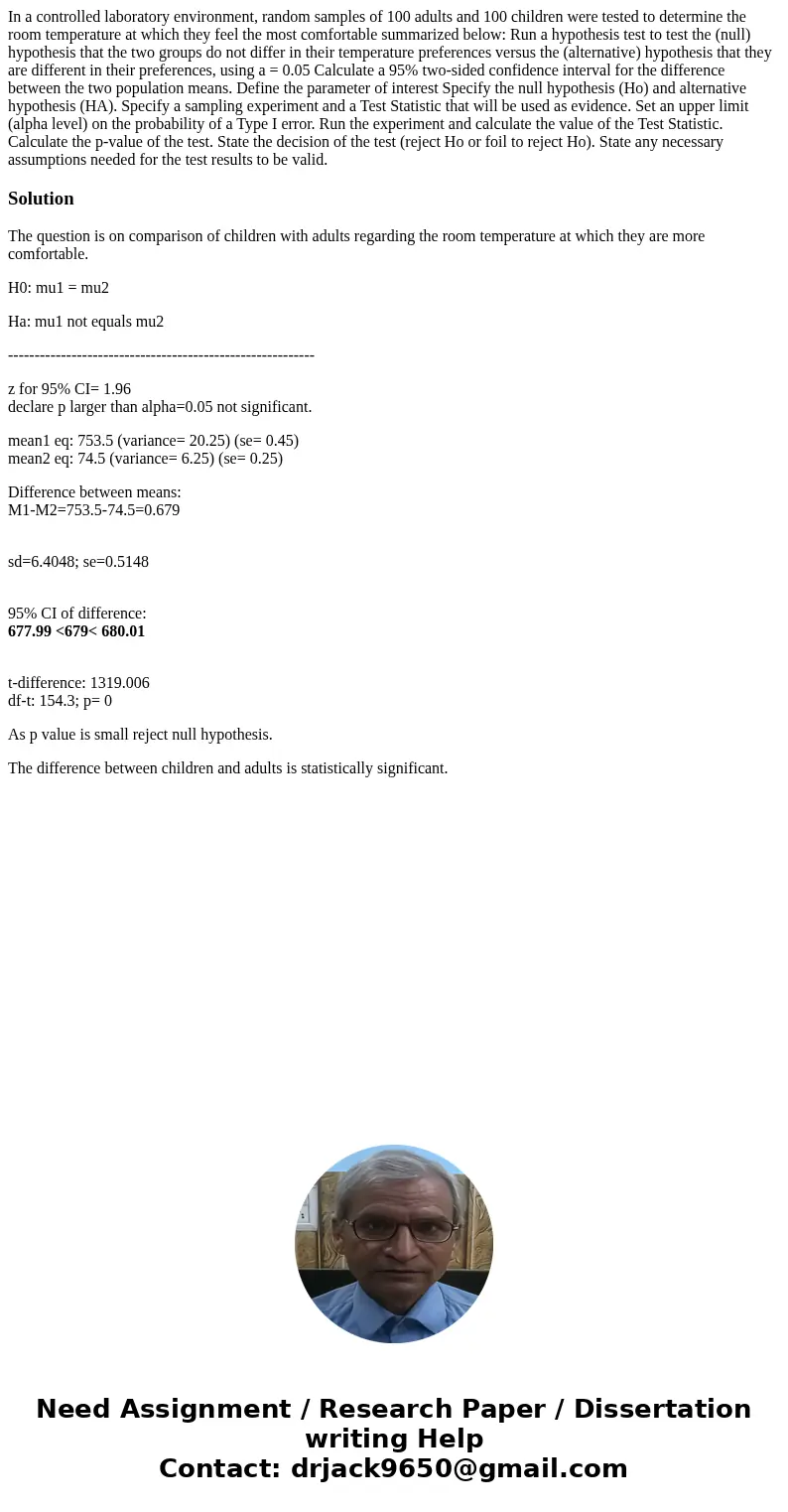In a controlled laboratory environment random samples of 100
In a controlled laboratory environment, random samples of 100 adults and 100 children were tested to determine the room temperature at which they feel the most comfortable summarized below: Run a hypothesis test to test the (null) hypothesis that the two groups do not differ in their temperature preferences versus the (alternative) hypothesis that they are different in their preferences, using a = 0.05 Calculate a 95% two-sided confidence interval for the difference between the two population means. Define the parameter of interest Specify the null hypothesis (Ho) and alternative hypothesis (HA). Specify a sampling experiment and a Test Statistic that will be used as evidence. Set an upper limit (alpha level) on the probability of a Type I error. Run the experiment and calculate the value of the Test Statistic. Calculate the p-value of the test. State the decision of the test (reject Ho or foil to reject Ho). State any necessary assumptions needed for the test results to be valid.
Solution
The question is on comparison of children with adults regarding the room temperature at which they are more comfortable.
H0: mu1 = mu2
Ha: mu1 not equals mu2
----------------------------------------------------------
z for 95% CI= 1.96
declare p larger than alpha=0.05 not significant.
mean1 eq: 753.5 (variance= 20.25) (se= 0.45)
mean2 eq: 74.5 (variance= 6.25) (se= 0.25)
Difference between means:
M1-M2=753.5-74.5=0.679
sd=6.4048; se=0.5148
95% CI of difference:
677.99 <679< 680.01
t-difference: 1319.006
df-t: 154.3; p= 0
As p value is small reject null hypothesis.
The difference between children and adults is statistically significant.

 Homework Sourse
Homework Sourse